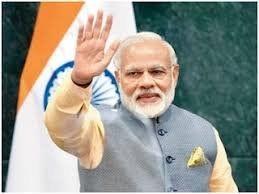New Delhi- Prime Minister Narendra Modi has achieved a major political landmark by becoming India’s second-longest-serving Prime Minister in a continuous term, overtaking the record held by former Prime Minister Indira Gandhi. As of Friday, Modi has been in office for 4,078 days—surpassing Gandhi’s 4,077 days of uninterrupted leadership from January 24, 1966 to March 24, 1977.
Since first taking oath on May 26, 2014, Modi has completed 11 years and 60 days at the helm of the central government. At the age of 74, his tenure has not only been long but historically significant, marked by a series of unprecedented achievements that set him apart from all former non-Congress Prime Ministers.
The record for the longest-serving Prime Minister still belongs to Jawaharlal Nehru, who governed the nation for 16 years and 286 days from Independence in 1947 until his death in 1964.
Modi stands out as the first Prime Minister born in independent India. He is also the longest-serving PM from a non-Hindi-speaking state and the most enduring non-Congress leader to ever hold the post. His electoral dominance is equally striking—he is the only non-Congress Prime Minister to have completed two full terms and returned for a third with an outright majority in the Lok Sabha.
In the 2024 general elections, Modi once again secured a clear mandate, making him the first sitting Prime Minister since Indira Gandhi in 1971 to return to power with full strength. His winning streak includes six back-to-back victories as the face of his party: three times in the Gujarat state elections (2002, 2007, 2012) and three times in the national elections (2014, 2019, 2024).
This milestone is yet another testament to Modi’s nearly 24-year-long leadership journey—first as Gujarat’s Chief Minister and now as Prime Minister of India—reinforcing his place as one of the most enduring and influential leaders in the country’s democratic landscape.






